Filter by
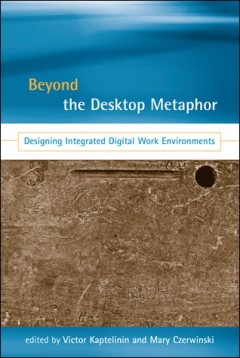
Beyond the desktop metaphor :designing integrated digital work environments
Leading developers and researchers report on what the next generation of digital work environments may look like, analyzing the theory and practice of designing "out of the box" to facilitate multitasking, collaboration, and multiple technologies.OCLC-licensed vendor bibliographic record.
- Edition
- -
- ISBN/ISSN
- 9780262256483
- Collation
- 1 online resource (vi, 360 pages) :illustrations
- Series Title
- -
- Call Number
- -

The Metainterface: The Art of Platforms, Cities, and Clouds
How the interface has moved from the PC into cultural platforms, as seen in a series of works of net art, software art and electronic literature. The computer interface is both omnipresent and invisible, at once embedded in everyday objects and characterized by hidden exchanges of information between objects. The interface has moved from office into culture, with devices, apps, the cloud, and d…
- Edition
- -
- ISBN/ISSN
- 9780262346559
- Collation
- 1 online resource (248 pages).
- Series Title
- -
- Call Number
- -
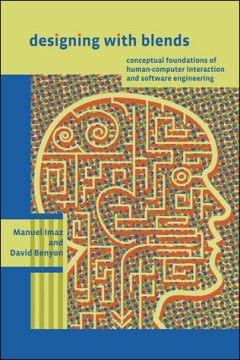
Designing with blends: conceptual foundations of human-computer interaction a…
How recent research in cognitive science offers new ways to understand the interaction of people and computers and develops a new literacy for well-informed, sensitive software design.OCLC-licensed vendor bibliographic record.
- Edition
- -
- ISBN/ISSN
- 9780262256407
- Collation
- 1 online resource (xi, 229 pages) :illustrations
- Series Title
- -
- Call Number
- -
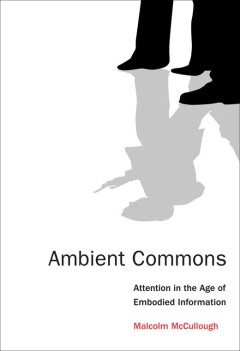
Ambient Commons: Attention in the Age of Embodied Information
The world is filling with ever more kinds of media, in ever more contexts and formats. Glowing rectangles have become part of the scene; screens, large and small, appear everywhere. Physical locations are increasingly tagged and digitally augmented. Sensors, processors, and memory are not found only in chic smart phones but also built into everyday objects. Amid this flood, your attention pract…
- Edition
- -
- ISBN/ISSN
- 9780262313476
- Collation
- 1 online resource
- Series Title
- -
- Call Number
- -
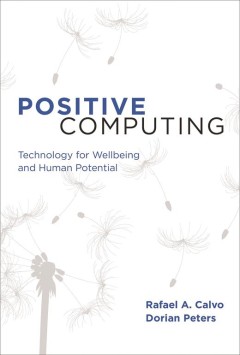
Positive computing : technology for wellbeing and human potential
"On the eve of Google's IPO in 2004, Larry Page and Sergey Brin vowed not to be evil. Today, a growing number of technologists would go further, trying to ensure that their work actively improves people's lives. Technology, so pervasive and ubiquitous, has the capacity to increase stress and suffering; but it also has the less-heralded potential to improve the well-being of individuals, society…
- Edition
- -
- ISBN/ISSN
- 0262325683
- Collation
- 1 online resource (x, 288 pages).
- Series Title
- -
- Call Number
- -

Where the Action Is: The Foundations of Embodied Interaction
Computer science as an engineering discipline has been spectacularly successful. Yet it is also a philosophical enterprise in the way it represents the world and creates and manipulates models of reality, people, and action. In this book, Paul Dourish addresses the philosophical bases of human-computer interaction. He looks at how what he calls "embodied interaction"—an approach to interactin…
- Edition
- -
- ISBN/ISSN
- 9780262256056
- Collation
- -
- Series Title
- -
- Call Number
- -
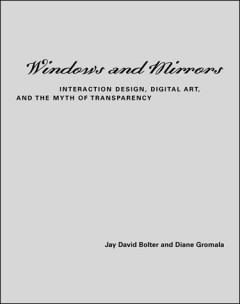
https://direct.mit.edu/books/book/2413/Windows-and-MirrorsInteraction-Design-…
The experience of digital art and how it is relevant to information technology.In Windows and Mirrors: Interaction Design, Digital Art, and the Myth of Transparency, Jay David Bolter and Diane Gromala argue that, contrary to Donald Norman's famous dictum, we do not always want our computers to be invisible "information appliances." They say that a computer does not feel like a toaster or a vacu…
- Edition
- -
- ISBN/ISSN
- 9780262268998
- Collation
- 1 online resource (xi, 182 pages) :illustrations.
- Series Title
- -
- Call Number
- -

Evolutionary intelligence :how technology will make us smarter
"Ubiquitous computational technologies will define our future, and this book takes the hopeful view that such technologies, properly designed, can enhance rather than diminish human agency. As people co-evolve with our technology, we can develop technological assistance to enhance our decision making and compensate for our biases: personalized medicine, intelligent romance, digital law, hybrid …
- Edition
- -
- ISBN/ISSN
- 0262376237
- Collation
- 1 online resource.
- Series Title
- -
- Call Number
- -

Touch screen theory :digital devices and feelings
"Touchscreens are key elements of people's everyday lives but critical frameworks for addressing these devices and the associated promises of engagement and embodied experiences are still wanting. White proposes methods for studying touchscreens and digital engagements and expanding a variety of research areas, including studies of digital and Internet cultures, hardware, interfaces, media and …
- Edition
- -
- ISBN/ISSN
- 9780262372312
- Collation
- 1 online resource
- Series Title
- -
- Call Number
- -

Working with AI :real stories of human-machine collaboration
"An exploration of the future of work featuring real-world profiles of changing jobs and work arrangements in light of human/AI interaction"--OCLC-licensed vendor bibliographic record.
- Edition
- -
- ISBN/ISSN
- 9780262371209
- Collation
- 1 online resource.
- Series Title
- -
- Call Number
- -
 Computer Science, Information & General Works
Computer Science, Information & General Works  Philosophy & Psychology
Philosophy & Psychology  Religion
Religion  Social Sciences
Social Sciences  Language
Language  Pure Science
Pure Science  Applied Sciences
Applied Sciences  Art & Recreation
Art & Recreation  Literature
Literature  History & Geography
History & Geography